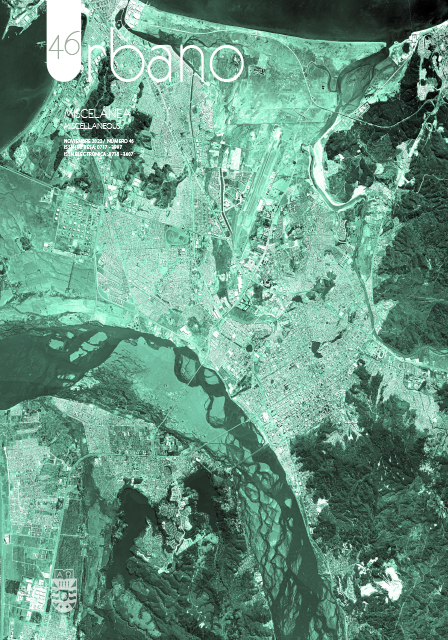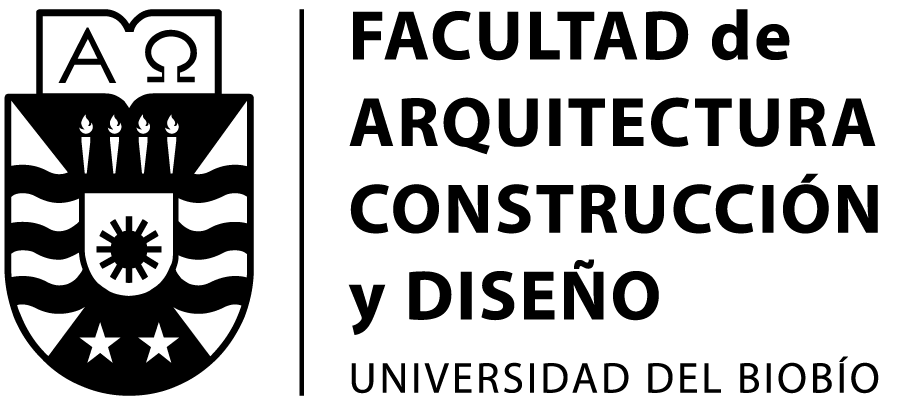Walking access to urban wetlands: an opportunity for recreation and wellbeing
DOI:
https://doi.org/10.22320/07183607.2022.25.46.05Keywords:
accessibility, urban wetlands, walkability, perception, well-beingAbstract
Urban wetlands in Chilean cities are one of the urban ecosystems most affected by real estate developments. Despite their importance for recreation and biodiversity, they are constantly shrinking due to deficient urban planning processes. However, with the recent boom of green and sustainable cities, wetlands are being revalued through restoration projects and open urban parks, with natural value for the well-being of habitats and the urban population. In this sense, promoting accessibility through suitable infrastructure will contribute to improving the quality of life of inhabitants and the urban environment, specifically through the integration of blue-green infrastructure. Walkable access to a network of wetlands called "La Ruta del Agua" (“the water trail”) has been analyzed here, through a perception-based survey, looking to improve access to nature in cities. The urban wetlands assessed comprise five ecosystems located in different types of neighborhoods in the metropolitan area of Concepción, Chile. Although this is a local case study, it is relevant from a methodological perspective, given the existence of a large number of degraded urban wetlands in Latin America that are in danger of disappearing. The results show that wetlands are accessible by walking, but the fact that they are rarely visited, despite being close to residential areas, reveals a lack of integration as open green spaces, rich in biodiversity, and as places of recreation in the city of Concepción. The results of this study are valuable for the design of future “wetland parks”, one which must consider the ecosystem values, biodiversity, and recreation for people’s well-being.
Downloads
References
ABDELFATTAH, L., DEPONTE, D. Y FOSSA, G.(2022). The 15-minute city: interpreting the model to bring out urban resiliencies. Transportation Research Procedia, 60, 330-337. DOI: https://doi.org/10.1016/j.trpro.2021.12.043
BARROS, R. (2018). Pilpilén común. En F. Madreno, R. Barros, H. Norambuena, R. Matus y F. Schmitt (Eds.), Atlas de las aves nidificantes de Chile (pp. 202–203). Santiago: Red de Observadores de Aves y Vida Silvestre de Chile.
BASU, T., DAS, A., PHAM, Q. B., AL-ANSARI, N., LINH, N. T. T. Y LAGERWALL, G. (2021). Development of an integrated peri-urban wetland degradation assessment approach for the Chatra Wetland in eastern India. Scientific Reports, 11(1), 4470. DOI: https://doi.org/10.1038/s41598-021-83512-6
BELLALTA, M. (2021). El paisaje palustre como infraestructura urbana para la resiliencia ante el cambio climático: revinculación del sistema de humedal Vasco da Gama – Paicaví – Tucapel Bajo en la ciudad de Concepción, Chile. Santiago: Pontificia Universidad Católica de Chile.
CAMPO, D. (2016). A New Postindustrial Nature: Remembering the Wild Waterfront of Hunters Point. Streetnotes, 25. DOI: https://doi.org/10.5070/S5251030458
CAPROTTI, F., SPRINGER, C. Y HARMER, N. (2015). ‘Eco’ For Whom? Envisioning Eco-urbanism in the Sino-Singapore Tianjin Eco-city, China. International Journal of Urban and Regional Research, 39(3), 495–517. DOI: https://doi.org/10.1111/1468-2427.12233
CHUNG VELÁSQUEZ, S. Y LOPEZ MANRIQUE, H. (2021). Sitio Ramsar Los Pantanos de Villa: Propuesta turística para el Circuito Marvilla basada en los registros de la avifauna. South Sustainability, 2(2). DOI: https://doi.org/10.21142/SS-0202-2021-pb001
CROUSE, D. L., BALRAM, A., HYSTAD, P., PINAULT, L., VAN DEN BOSCH, M., CHEN, H., RAINHAM, D., THOMSON, E. M., CLOSE, C. H., VAN DONKELAAR, A., MARTIN, R. V., MÉNARD, R., ROBICHAUD, A. Y VILLENEUVE, P. J. (2018). Associations between Living Near Water and Risk of Mortality among Urban Canadians. Environmental Health Perspectives, 126(7). DOI: https://doi.org/10.1289/EHP3397
DABROWSKA-ZIELINSKA, K., BUDZYNSKA, M., TOMASZEWSKA, M., BARTOLD, M., GATKOWSKA, M., MALEK, I., TURLEJ, K. Y NAPIORKOWSKA, M. (2014). Monitoring Wetlands Ecosystems Using ALOS PALSAR (L-Band, HV) Supplemented by Optical Data: A Case Study of Biebrza Wetlands in Northeast Poland. Remote Sensing, 6(2), 1605–1633. DOI: https://doi.org/10.3390/rs6021605
DARRAH, S. E., SHENNAN-FARPÓN, Y., LOH, J., DAVIDSON, N. C., FINLAYSON, C. M., GARDNER, R. C. Y WALPOLE, M. J. (2019). Improvements to the Wetland Extent Trends (WET) index as a tool for monitoring natural and human-made wetlands. Ecological Indicators, 99, 294–298. DOI: https://doi.org/10.1016/j.ecolind.2018.12.032
DE URRESTI, A. (2019). Humedales Urbanos Historia de una ley pionera y ciudadana de protección ambiental. Senado de Chile.Vicepresidencia del Senado, Ediciones Centro de Extensión del Senado.
GÁRATE, T. Y FERNÁNDEZ, A. (2020). Plan de conservación de humedales urbanos de Llanquihue. Fundación Legado Chile, (146). Recuperado de https://legadochile.cl/wp-content/uploads/2021/02/Plan-de-Conservacion-Llanquihue.pdf
GASCON, M., TRIGUERO-MAS, M., MARTÍNEZ, D., DADVAND, P., ROJAS-RUEDA, D., PLASÈNCIA, A. Y NIEUWENHUIJSEN, M. J. (2016). Residential green spaces and mortality: A systematic review. Environment International, 86, 60–67. DOI: https://doi.org/10.1016/j.envint.2015.10.013
Gobierno Regional - Consultora Edáfica. (2019). Estudio Estratégico para la revalorización de la red de humedales del Gran Concepción. Diagnóstico y línea base. Concepción: Gobierno Regional Bío-Bío.
GRIMA, N., CORCORAN, W., HILL-JAMES, C., LANGTON, B., SOMMER, H. Y FISHER, B. (2020). The importance of urban natural areas and urban ecosystem services during the COVID-19 pandemic. PLOS ONE, 15(12). DOI: https://doi.org/10.1371/journal.pone.0243344
HARTIG, T., MITCHELL, R., DE VRIES, S. Y FRUMKIN, H. (2014). Nature and Health. Annual Review of Public Health, 35(1), 207–228. DOI: https://doi.org/10.1146/annurev-publhealth-032013-182443
LEÓN SULCA, G. M. (2020). Gobernanza ambiental y conservación: las gestiones del SERNANP y PROHVILLA en el Refugio de Vida Silvestre Los Pantanos de Villa. Revista Argumentos, 1(1), 119–124. DOI: https://doi.org/10.46476/ra.vi1.20
MARTÍN VARISTO, Y., ROSELL, M. Y ROSAKE, P. (2009). Capacidad de carga turística en área de humedales. Aportes y Transferencia, 13(2), 45–64. Recuperado de http://nulan.mdp.edu.ar/id/eprint/1551
MAYORGA-MORAL, N. (2013). Experiencias de parques lineales en Brasil: espacios multifuncionales con potencial para brindar alternativas a problemas de drenaje y aguas urbanas. Nota Técnica Del Banco Internacional de Dessarrollo, IDBTN-518. Recuperado de https://publications.iadb.org/publications/spanish/document/Experiencias-de-parques-lineales-en-Brasil-Espacios-multifuncionales-con-potencial-para-brindar-alternativas-a-problemas-de-drenaje-y-aguas-urbanas.pdf
MORENO, O. Y GÁRATE, T. (2020). Parque Humedal Baquedano. Ciudad de Llanquihue. Fundación Legado Chile. Recuperado de https://legadochile.cl/wp-content/uploads/2020/07/Parque-Humedal-Baquedano.pdf
PAUCHARD, A., AGUAYO, M., PEÑA, E. Y URRUTIA, R. (2006). Multiple effects of urbanization on the biodiversity of developing countries: The case of a fast-growing metropolitan area (Concepción, Chile). Biological Conservation, 127(3), 272–281. DOI: https://doi.org/10.1016/j.biocon.2005.05.015
PENATTI, N. C., RIBEIRO, T. I. , FERREIRA, L. G., ARANTES, A. E. Y COE, M. T. (2015). Satellite-based hydrological dynamics of the world’s largest continuous wetland. Remote Sensing of Environment, 170, 1–13. DOI: https://doi.org/10.1016/j.rse.2015.08.031
PINTO, F. Y AKHAVAN, M.(2022). Scenarios for a Post-Pandemic City: urban planning strategies and challenges of making “Milan 15-minutes city”. Transportation Research Procedia, 60, 370-377, DOI: https://doi.org/10.1016/j.trpro.2021.12.048
PRICE, E. P. F., SPYREAS, G. Y MATTHEWS, J. W. (2020). Biotic homogenization of wetland vegetation in the conterminous United States driven by Phalaris arundinacea and anthropogenic disturbance. Landscape Ecology, 35(3), 779–792. DOI: https://doi.org/10.1007/s10980-020-00978-x
REEVES, J. P., KNIGHT, A. T., STRONG, E. A., HENG, V., NEALE, C., CROMIE, R. Y VERCAMMEN, A. (2019). The Application of Wearable Technology to Quantify Health and Wellbeing Co-benefits From Urban Wetlands. Frontiers in Psychology, 10. DOI: https://doi.org/10.3389/fpsyg.2019.01840
ROJAS, C. Y JORQUERA, F. (2021). Urban Fabrics to Eco-Friendly Blue–Green for Urban Wetland Development. Sustainability, 13(24). DOI: https://doi.org/10.3390/su132413745
ROJAS, C., PAÉZ, A., BARBOSA, O. Y CARRASCO, J. (2016). Accessibility to Urban Green spaces in Chilean cities using adaptive thresholds. Journal of Transport Geography, 57, 227-240.
ROJAS, C., SEPÚLVEDA, E., JORQUERA, F., MUNIZAGA, J. Y PINO, J. (2022). Accessibility disturbances to the biodiversity of urban wetlands due to built environment. City and Environment Interactions, 13. DOI: https://doi.org/10.1016/j.cacint.2021.100076
SONG, S., ALBERT, C. Y PROMINSKI, M. (2020). Exploring integrated design guidelines for urban wetland parks in China. Urban Forestry & Urban Greening, 53. DOI: https://doi.org/10.1016/j.ufug.2020.126712
Urbancost (2021). Proyecto de Investigación ANID FONDECYT, Nº 1190251 “Efectos de la conservación y accesibilidad en los humedales urbanos del área metropolitana de Concepción”.
VAN DEN BERG, M., WENDEL-VOS, W., VAN POPPEL, M., KEMPER, H., VAN MECHELEN, W. Y MAAS, J. (2015). Health benefits of green spaces in the living environment: A systematic review of epidemiological studies. Urban Forestry & Urban Greening, 14(4), 806–816. DOI: https://doi.org/10.1016/j.ufug.2015.07.008
VILLAGRA, P., ROJAS, C., ALVES, S. Y ROJAS, O. (2022). Spatial interactions between perceived biophilic values and urbanization typologies in wetland areas. Borrador inédito.
VIVANCO CALDERÓN, E. P. (2020). Turismo ornitológico en los humedales de Lima 2019. INNOVA Research Journal, 5(1), 256–268. DOI: https://doi.org/10.33890/innova.v5.n1.2020.1045
Wildfowl & Wetlands Trust [WWT] (2021). Wetlands Can. Recuperado de https://www.wwt.org.uk/wetlands-can/.
ZHAI, X. Y LANGE, E. (2021). The Influence of Covid-19 on Perceived Health Effects of Wetland Parks in China. Wetlands, 41(8). DOI: https://doi.org/10.1007/s13157-021-01505-7
Downloads
Published
How to Cite
Issue
Section
License
Copyright (c) 2022 Carolina Rojas-Quezada, Felipe Jorquera-Guajardo, Stefan Steiniger

This work is licensed under a Creative Commons Attribution-ShareAlike 4.0 International License.
The content of articles which are published in each edition of Habitat Sustentable, is the exclusive responsibility of the author(s) and does not necessarily represent the thinking or compromise the opinion of University of the Bio-Bio.
The author(s) conserve their copyright and guarantee to the journal, the right of first publication of their work. This will simultaneously be subject to the Creative Commons Recognition License CC BY-SA, which allows others to share-copy, transform or create new materials from this work for non-commercial purposes, as long as they recognize authorship and the first publication in this journal, and its new creations are under a license with the same terms.![]()























